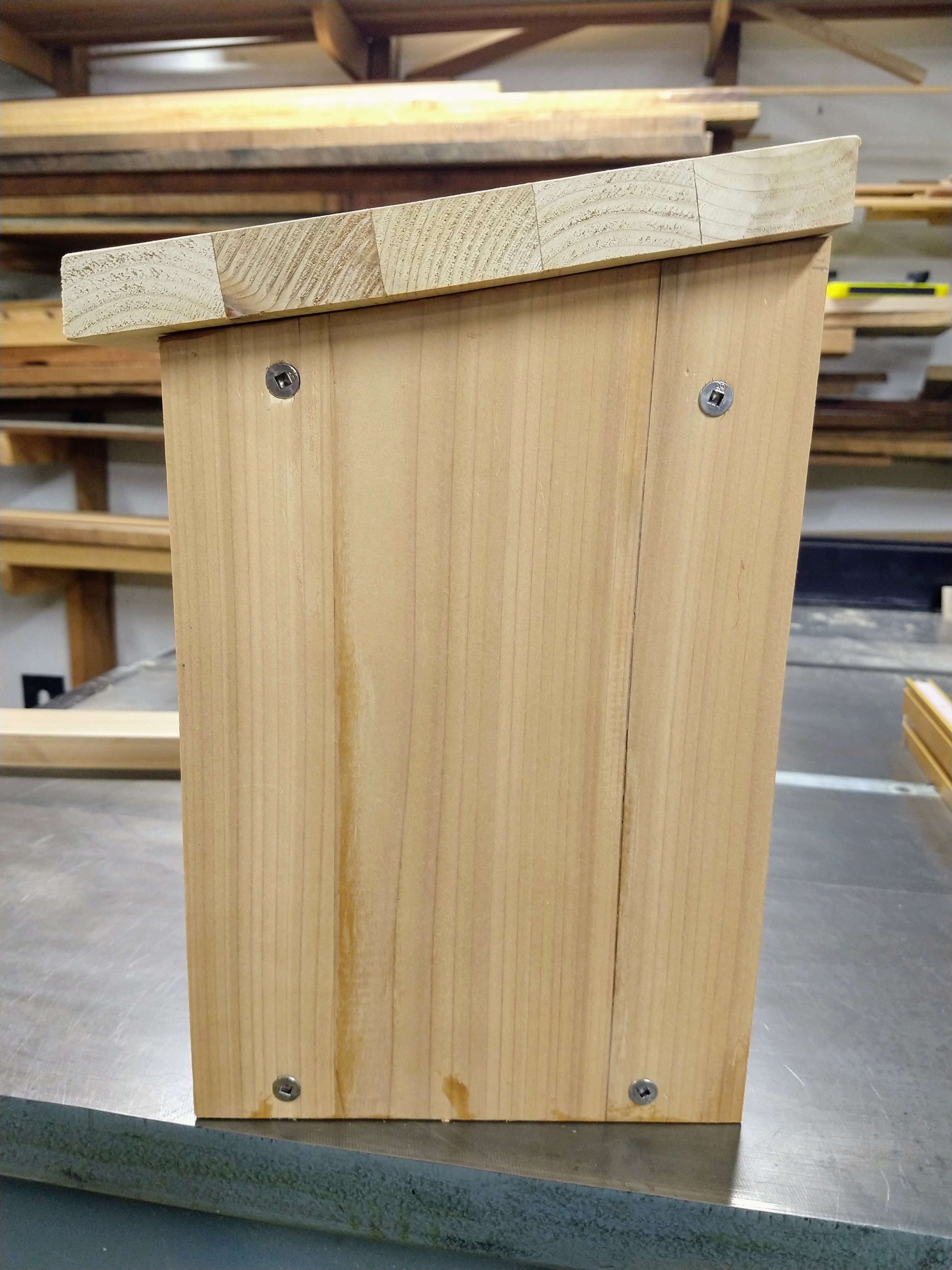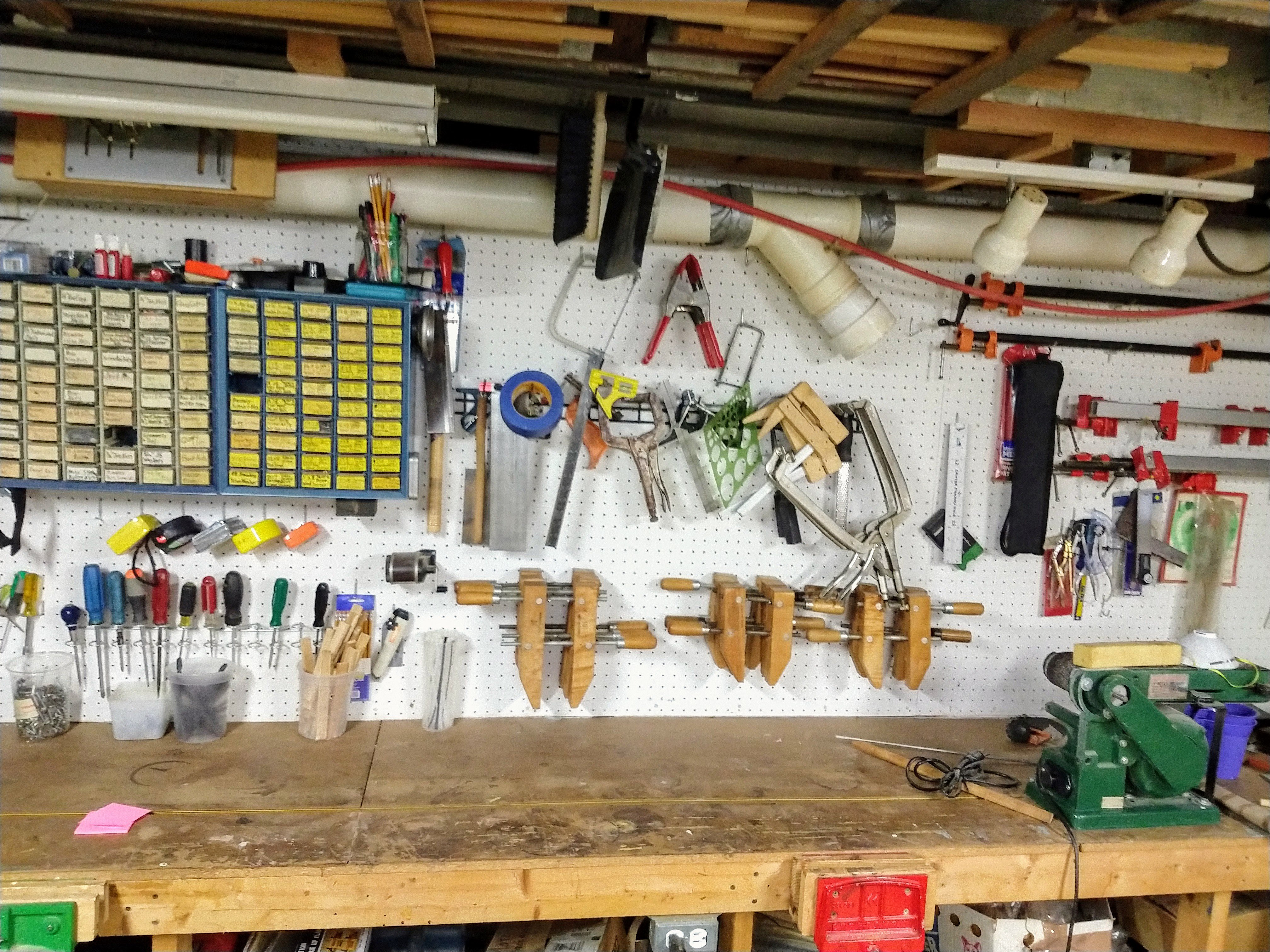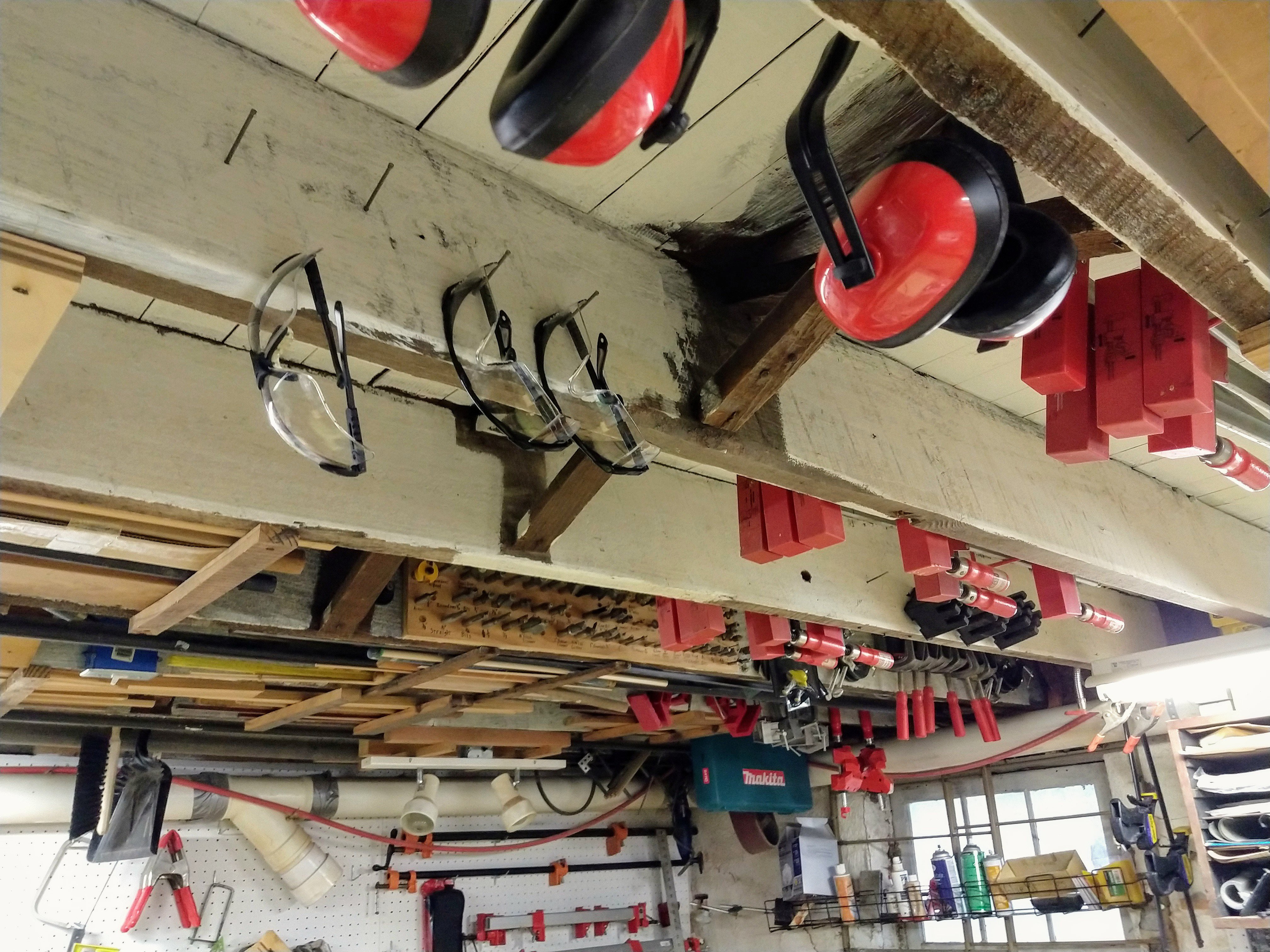pepperhead212
Executive Chef
I was planning on doing this, even before the recent corona virus scare, telling us to stay at home as much as possible. I always spend a lot of time in my workshop, except in heavy gardening seasons!
I got the idea for this when I saw some of the mason bee houses for sale, and I said "Hey, that would be easy to make!" Maybe not really easy, but it was easy to draw up the plans, and once I did that, it was easy! I haven't finished it, but the most time consuming work is done, cutting all those grooves.
First, I got some cheap cedar (a wood suggested for the bees, since finishing is not necessary), being sold at clearance because it was bowed, and nobody would buy it for deck-making! I cut them to 4' pieces, then put them on a workbench, with spacers, to let them stabilize. Then I jointed one side, until totally flat, then planed them all, to 3/4 thick. It is only 5.5" wide, and wider would have been better, but I didn't want to rout it lengthwise, as it seemed it would be weaker that way, in the thin sections.
I first cut 9 pieces, 6 5/16" wide, to make the 11 cross grain router cuts, on both sides of the piece, with a 5/16" cove box bit, set to 5/32" deep, so the 2 cuts on opposing pieces meet to make a 5/16" diameter hole.
First cut:
 First set of cuts on router table, using a 5/16 inch cove box bit. by pepperhead212, on Flickr
First set of cuts on router table, using a 5/16 inch cove box bit. by pepperhead212, on Flickr
Last cut:
 Last cut, at least with the router. by pepperhead212, on Flickr
Last cut, at least with the router. by pepperhead212, on Flickr
Unfortunately, cedar is a wood that splinters a lot, and after each set of cuts, I had to take a piece of sandpaper, wrapped around a ¼" dowel, to clean out the grooves, and the splinters sticking up. Here is a photo, showing those splinters, and cleaning them out. It didn't take long, for each set of 16.
 Cleaning out the grooves, using a 1/4 inch dowel, wrapped around 120 grit sandpaper. by pepperhead212, on Flickr
Cleaning out the grooves, using a 1/4 inch dowel, wrapped around 120 grit sandpaper. by pepperhead212, on Flickr
Here are the finished inserts, showing how it looks like 88 holes were drilled, all the way through.
 The wood, loosely stacked, showing the future home for 88 mason bees. by pepperhead212, on Flickr
The wood, loosely stacked, showing the future home for 88 mason bees. by pepperhead212, on Flickr
All I have to do now, is make a "cage", to hold them in, and protect them - the easy part of the job. I'll post that later. I would have started it tonight, but I try not to do anything noisy after 9 pm, since my neighbors would definitely hear it!
I got the idea for this when I saw some of the mason bee houses for sale, and I said "Hey, that would be easy to make!" Maybe not really easy, but it was easy to draw up the plans, and once I did that, it was easy! I haven't finished it, but the most time consuming work is done, cutting all those grooves.
First, I got some cheap cedar (a wood suggested for the bees, since finishing is not necessary), being sold at clearance because it was bowed, and nobody would buy it for deck-making! I cut them to 4' pieces, then put them on a workbench, with spacers, to let them stabilize. Then I jointed one side, until totally flat, then planed them all, to 3/4 thick. It is only 5.5" wide, and wider would have been better, but I didn't want to rout it lengthwise, as it seemed it would be weaker that way, in the thin sections.
I first cut 9 pieces, 6 5/16" wide, to make the 11 cross grain router cuts, on both sides of the piece, with a 5/16" cove box bit, set to 5/32" deep, so the 2 cuts on opposing pieces meet to make a 5/16" diameter hole.
First cut:
 First set of cuts on router table, using a 5/16 inch cove box bit. by pepperhead212, on Flickr
First set of cuts on router table, using a 5/16 inch cove box bit. by pepperhead212, on FlickrLast cut:
 Last cut, at least with the router. by pepperhead212, on Flickr
Last cut, at least with the router. by pepperhead212, on FlickrUnfortunately, cedar is a wood that splinters a lot, and after each set of cuts, I had to take a piece of sandpaper, wrapped around a ¼" dowel, to clean out the grooves, and the splinters sticking up. Here is a photo, showing those splinters, and cleaning them out. It didn't take long, for each set of 16.
 Cleaning out the grooves, using a 1/4 inch dowel, wrapped around 120 grit sandpaper. by pepperhead212, on Flickr
Cleaning out the grooves, using a 1/4 inch dowel, wrapped around 120 grit sandpaper. by pepperhead212, on FlickrHere are the finished inserts, showing how it looks like 88 holes were drilled, all the way through.
 The wood, loosely stacked, showing the future home for 88 mason bees. by pepperhead212, on Flickr
The wood, loosely stacked, showing the future home for 88 mason bees. by pepperhead212, on FlickrAll I have to do now, is make a "cage", to hold them in, and protect them - the easy part of the job. I'll post that later. I would have started it tonight, but I try not to do anything noisy after 9 pm, since my neighbors would definitely hear it!


















